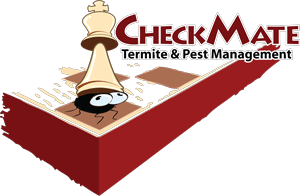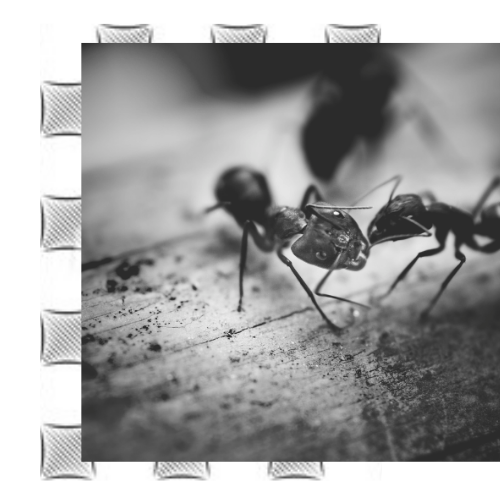As the children’s song goes, “The ants go marching one by one, hurrah, hurrah.” While you may think that seeing just one of them is no big deal, that single worker ant is leaving a pheromone trail alerting the colony of a new food or water source. Soon enough, you’ll find them marching by the hundreds or thousands, oh no. If some of those responding to the original trail find a new food source of their own and lay a second trail, the group collectively decides which is the better choice. With their cumulative brainpower, it’s no wonder that we have such a hard time controlling them.
Most of us have seen a few of them scurrying around and get some satisfaction from squishing them with our fingers. That joy may be short-lived, however. When the ant dies, it releases a danger signal to its colony mates (pheromones again), and that’s when it gets interesting. More worker ants follow up the alarm, and some species take the threat colony-wide and look to attack. If the dead member is close enough to the nest, the others may carry it further away to avoid contaminating the colony.
The little bit of smeared bug on your finger can have long-term repercussions. A 2018 study found molds and yeasts in 100% of the captured critters. Also found were E. coli, Salmonella, Listeria, Staphylococcus, and more. E. Coli was transferred to food surfaces about 70% of the time. Amazingly, with the number of pathogens they carry, colonies remain relatively disease-free. They have methods of cleaning and sanitizing themselves, even creating an anti-fungal. Some give their living quarters an acid bath. They even practice social distancing by interacting less with infected colony members. What’s next, little ant masks? They have also been shown to protect the queen from biological dangers.
It is well documented how structured a colony is and the incredible teamwork they display. Cooperation is not just among a species. Some fungus-growing ants share their harvest with other species. So, they are clean, work together, protect their leaders, and have evolved over 110 million years, but they are so little. When it comes to biomass, though, a little is a lot. Biomass is the total weight or quantity in a specified area, and planetwide, their biomass is between 15-20 percent, with some estimates at over 10 Quadrillion individual ants. In Louisiana’s sub-tropical climate, that number can reach more than 25%.
In the realm of nuisance species, bigger is not always badder, and two of our subjects made a top ten worst animal invaders in the Bayou State. At number 10 was the tawny crazy ant. They don’t sting or have a harmful bite, but they do like electricity, causing short-circuits in items from air-conditioning units to farm equipment.
Not to be outdone, coming in at number 7 is the red imported fire ant. If their ability to bite and sting were not bad enough, prominent flooding our area has caused them to grow bigger heads, with larger venom sacs and a stronger bite. Crush one of these on your body, and you may find yourself covered in them.
Those are only 2 of the 98 different species we have here. When the time comes to fight them, put your faith in the area’s number one pest control company, CheckMate Termite & Pest Management. We have over ten years of experience battling the worst pests Baton Rouge has to offer. Contact us for a free estimate.
All Rights Reserved | CheckMate Termite & Pest Management

